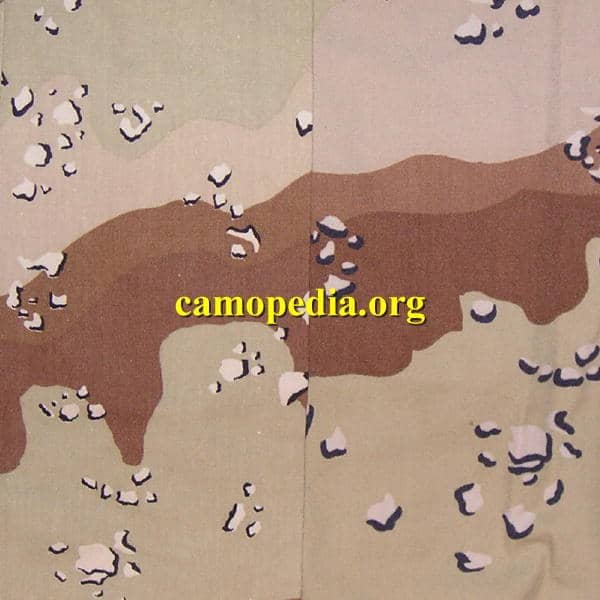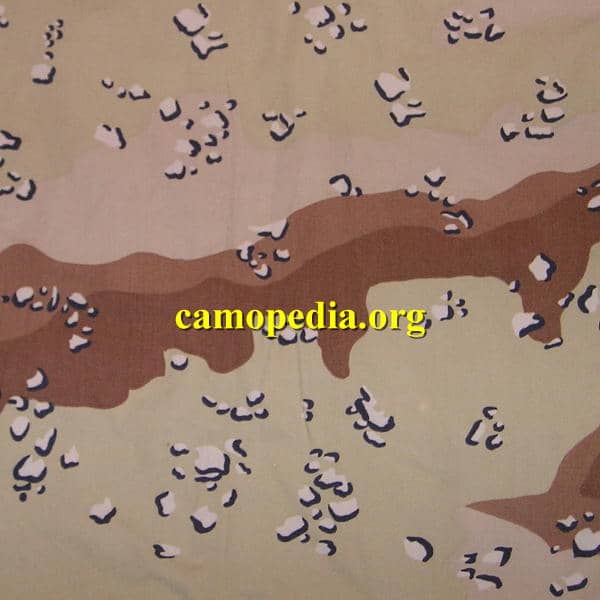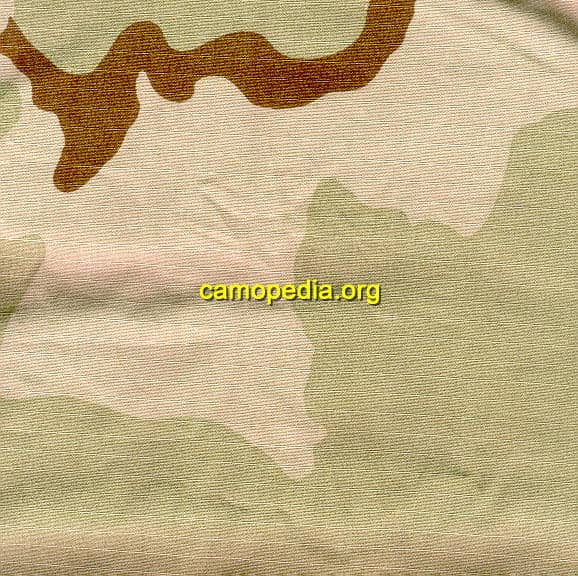US desert 6 camouflage pattern
The initial development of camouflage patterns specifically designed for military deployment and by the armed American forces began for the USA around the time of World War I. Similar to their British or French allies at that time, military engineers from America experimented with various designs for potentially concealing individuals engaged in terrain observation and snipers positioned along borders. One of these designs was based on the British "Symien sniper suit" and consisted of loose strips, bands of various colored fabric, some fastening cord, and a loosely fitting hood + jacket and pants. All of this was designed to look like foliage from a distance. Another uniform was created/designed by an Army engineer unit from the American university in Washington DC, and this included a jacket, pants, and hood painted with dark stripes on a lighter background. This was specifically designed to maximally conceal individuals in trees. The production and distribution of such outfits were minimal, and it was more in the experimental phase rather than all military uniforms being completely and massively camouflaged/altered/modified. Around 1918, it was still too early, even in the subsequent years—serious consideration of camouflage in the USA only began around World War II.
The American Army began researching camouflage patterns suitable for deployment in the desert around the mid-1960s. It logically anticipated the need to deploy personnel to the Middle East in response to the regular war between Israel and the surrounding Arab states. One of the camouflage patterns from the experimental preparation phase for this action was used during training in the rocky desert in California, as this area was used as a basis for this new camouflage pattern. This was acquired in large numbers in 1973, but the first official appearance of such a camouflaged uniform was in 1972. The design consisted of two shades of medium brown spread over larger areas of sand color and beige. Additionally, it was "speckled" with smaller black and white rocky formations. This desert camouflage pattern was produced between 1981 and 1991 and saw service with the armed forces of America wherever possible: during training in the Sinai desert, and also during operations in the Gulf ("Desert Storm") and in Somalia ("Restore Hope"). Some surviving examples of this camouflage pattern illustrate slight differences in the dimensions (and volume) of black, symbolizing rocks. This suggests, of course, that this camouflage pattern was sometimes slightly locally modified over the years. However, these inconsistencies do not appear on uniforms produced later or those made first. You can compare these types (old and new type versus middle type) directly in the image below.

And here we have the traditional six-color desert camouflage pattern. The army started calling the camouflage pattern shown below "chocolate chips" or also "chocolate chunks." It indeed resembles this local delicacy.

Shortly after the invasion of Kuwait by Iraqi forces in 1990, the US DOD was faced with the problem (and necessity and need) to equip a large number of combat personnel with camouflaged uniforms suitable for desert battles. Most American military forces deployed in Operation Desert Shield and Desert Storm had either the traditional Woodland BDU or the six-color desert camouflage pattern DBDU. At that time, the army also developed a general desert camouflage pattern much more suitable for less vegetated areas. Areas like those in Western Asia and Northern Africa. The resulting camouflage pattern is comprised of just three color shades. But more on that in another specialized article!








































































































































